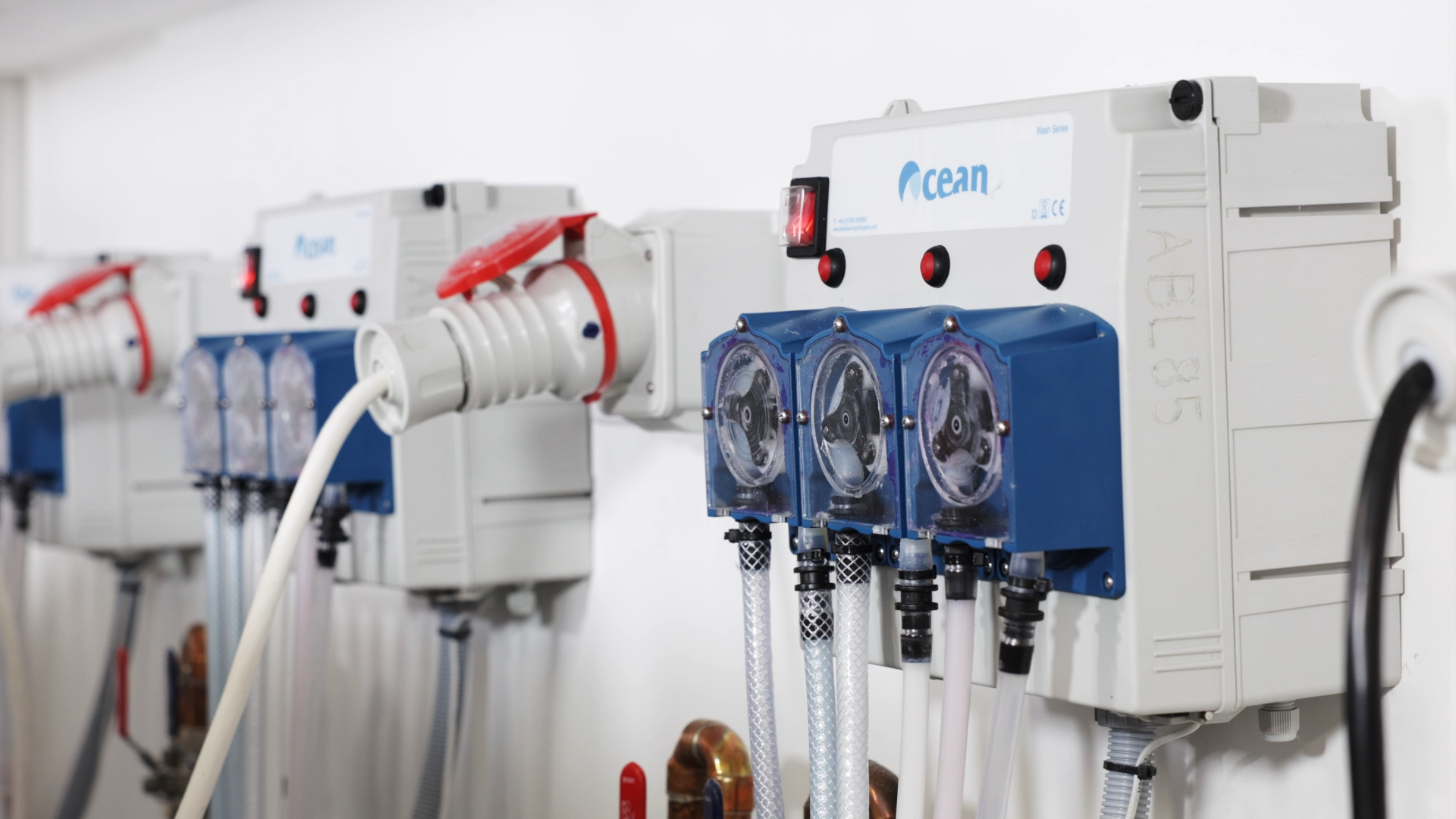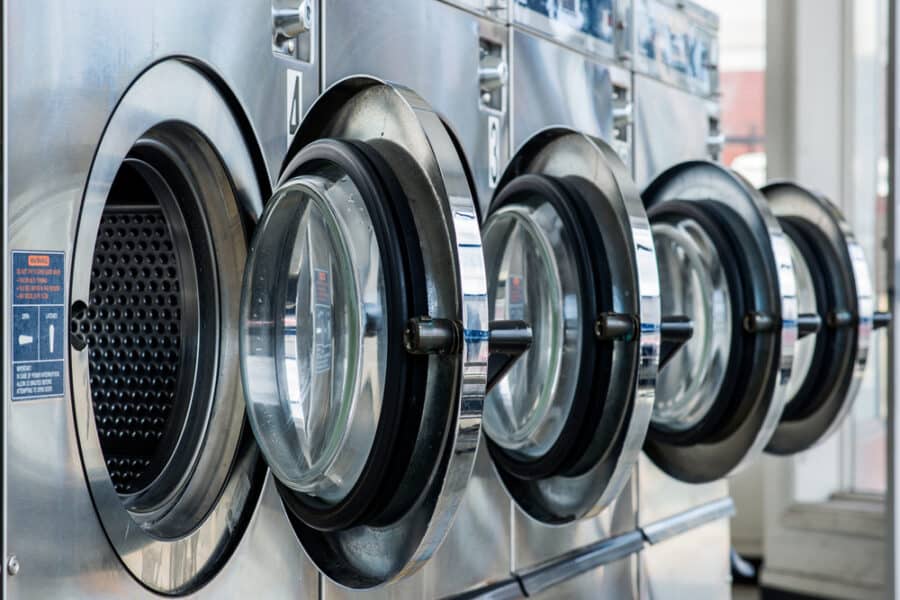Sustainability is a hot topic these days, and for good reason! As businesses across the UK strive to meet higher environmental standards, eco-friendly laundry solutions for care homes are becoming a big part of the conversation. But it’s not just about going green—it’s also about improving hygiene, reducing costs, and staying compliant with important regulations like those from the Care Quality Commission (CQC).
In this post, we’ll explore how making small changes to your laundry practices can help your care home reduce its environmental footprint while keeping everything clean, safe, and cost-effective.
1. Reducing Chemical Waste and Environmental Impact
We all know that laundry chemicals are necessary for getting the job done—but let’s face it, they can also have a negative impact on the environment if not used responsibly. Traditional laundry detergents can be harsh, leaving behind chemical residues that eventually make their way into rivers and oceans.
Eco-friendly laundry solutions are designed to help reduce this impact. By switching to biodegradable detergents, for example, care homes can minimize the harmful chemicals that end up in the water supply. These sustainable products break down more easily, leaving less of an environmental footprint, which is a win for both your care home and the planet.
2. Saving Energy and Water
The energy it takes to wash and dry loads of laundry day in and day out can really add up. Not to mention, wasting water is not ideal, especially with growing concerns about water scarcity.
Switching to energy-efficient washers and dryers can dramatically cut down on electricity consumption, making a real difference in both your carbon footprint and your utility bills. And many eco-friendly laundry systems are built to optimize water usage, so you’re using just the right amount for each load—no waste.
These changes are easy to implement, and they’ll start showing up on your energy bills in no time.
3. Keeping Hygiene High While Being an Eco-Friendly Care Home
As a care home, keeping residents safe and healthy is your number one priority. When it comes to laundry, hygiene is a huge part of that. The great news is, eco-friendly laundry solutions don’t mean you have to compromise on cleanliness.
In fact, plant-based and non-toxic detergents are just as effective at getting laundry squeaky clean—without the harsh chemicals. This is especially important in a care home, where many residents may have sensitive skin or compromised immune systems. By using eco-friendly detergents, you’re not only protecting the environment, but also the well-being of your residents.
4. Supporting CQC Laundry Standards
If you’re in the care sector, you’re already well aware of the importance of meeting CQC regulations. When it comes to laundry, CQC standards focus on infection control and hygiene. While the CQC doesn’t directly require eco-friendly laundry solutions for care homes, they do expect care homes to maintain high cleanliness standards. And that’s where eco-friendly laundry solutions can come in.
For example, the CQC’s Regulation 12 (Safe Care and Treatment) mandates that laundry equipment and practices must minimize the risk of infection. Eco-friendly detergents and auto dosing systems can help with this by ensuring that chemicals are dosed correctly, reducing waste, and improving consistency across laundry loads. Plus, when you’re using fewer harmful chemicals, you’re keeping your residents safe from potential allergens and toxins.
At Able, we provide eco-friendly laundry chemicals and autodosing systems that can help your care home meet these hygiene and safety standards—while also reducing your environmental footprint.
5. Saving Money in the Long Run
You might be thinking, “Going eco-friendly sounds great, but does it cost more?” The good news is that the upfront investment in energy-efficient equipment and sustainable laundry products often leads to long-term savings. Here’s how:
-
Lower utility bills: By using less energy and water, you’ll start saving money on electricity and water consumption.
-
Fewer chemicals used: With auto dosing systems that dispense the exact right amount of detergent, you’re not wasting chemicals or spending money on more than you need.
-
Fewer maintenance issues: Eco-friendly machines tend to have fewer breakdowns, meaning lower repair and replacement costs.
These savings add up over time, making eco-friendly laundry practices a smart financial decision for care homes.
6. The Power of Auto dosing Systems
Speaking of savings, let’s talk about auto dosing systems. These systems automatically dispense the exact amount of detergent needed for each load, ensuring that there’s no waste and that your laundry is cleaned just right every time. This precision doesn’t just save money—it also helps maintain consistent results across the board, which is key in a care home setting.
At Able, we offer advanced auto dosing systems that help care homes reduce chemical waste, improve laundry efficiency, and stay compliant with CQC standards. You can learn more about our laundry chemicals here.
Adopting eco-friendly laundry solutions in your care home isn’t just about being kind to the planet—it’s about improving hygiene, reducing costs, and ensuring that you meet the strict regulations set by bodies like the CQC. By making small changes, such as switching to biodegradable detergents and implementing energy-efficient equipment, your care home can enjoy the benefits of a greener, more cost-effective operation.
If you’re ready to take the next step in adopting eco-friendly laundry solutions, Able is here to help. Whether it’s through our auto dosing systems or sustainable laundry chemicals, we’re committed to helping care homes operate in an environmentally friendly—and efficient—way.
Key Takeaways:
-
Eco-friendly laundry solutions help reduce chemical waste, water consumption, and energy usage.
-
Sustainable detergents and washing methods maintain high hygiene standards in care homes.
-
Auto dosing systems provide precise chemical dosing, reducing waste and improving efficiency.
-
CQC regulations focus on hygiene and infection control, areas where eco-friendly solutions can support compliance.





